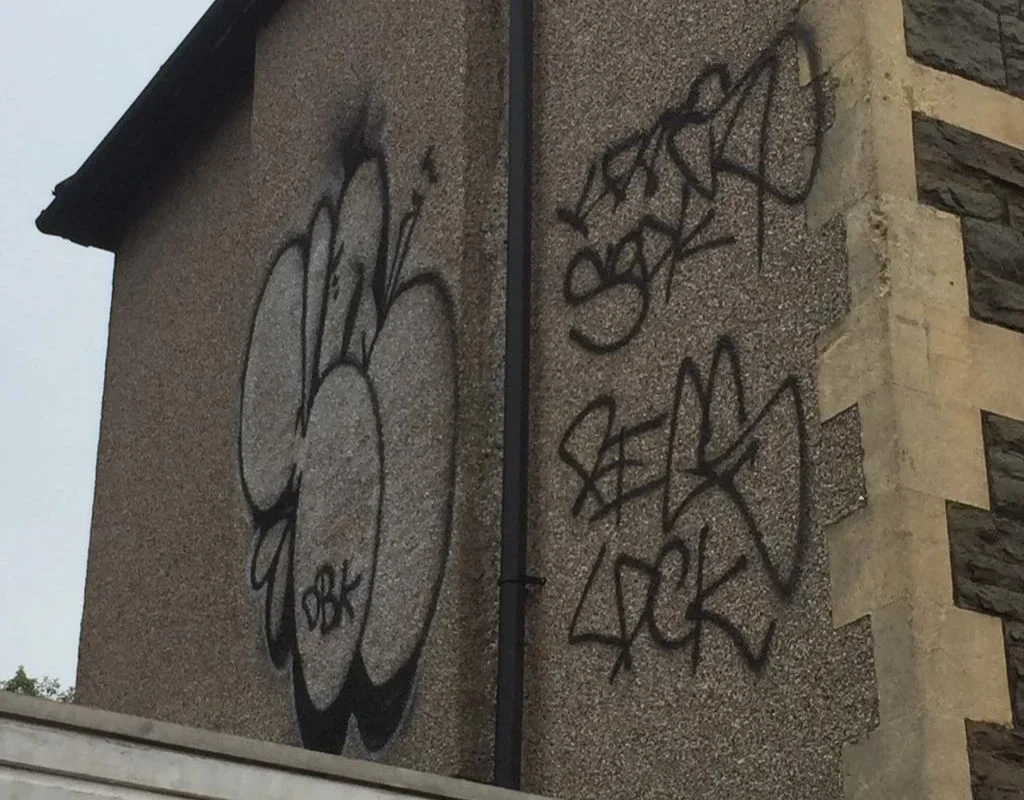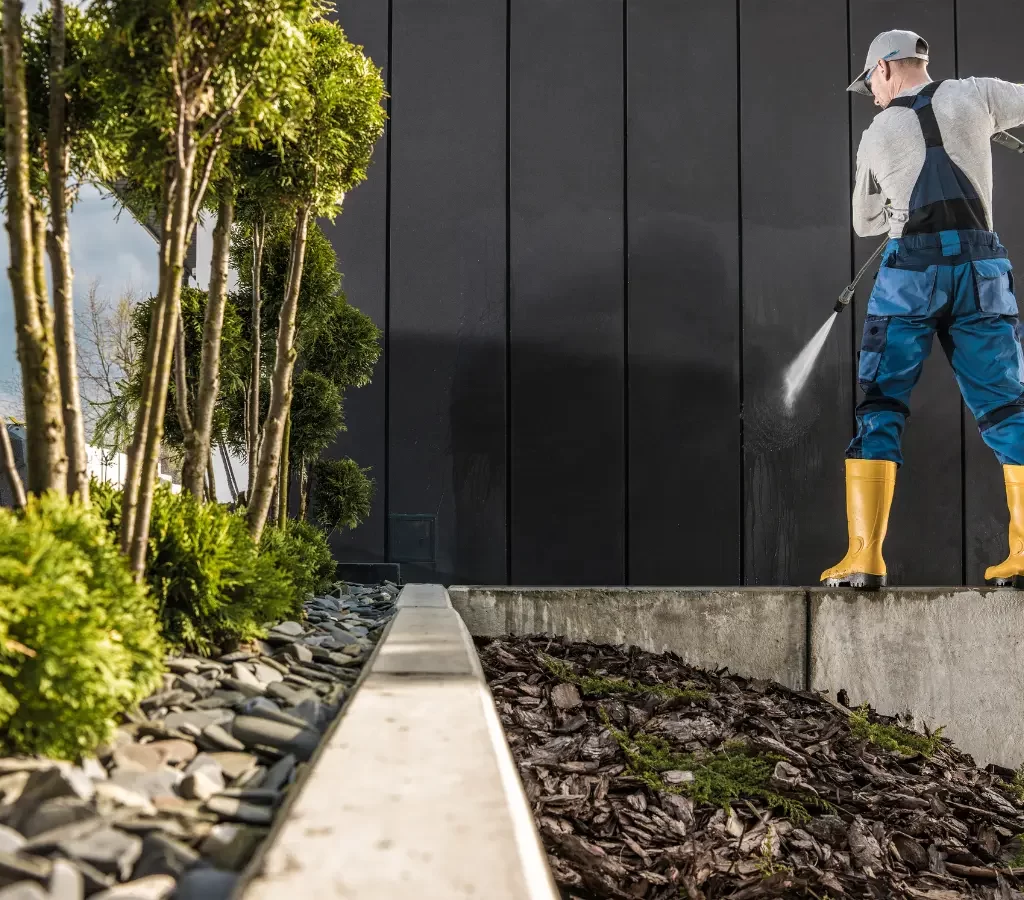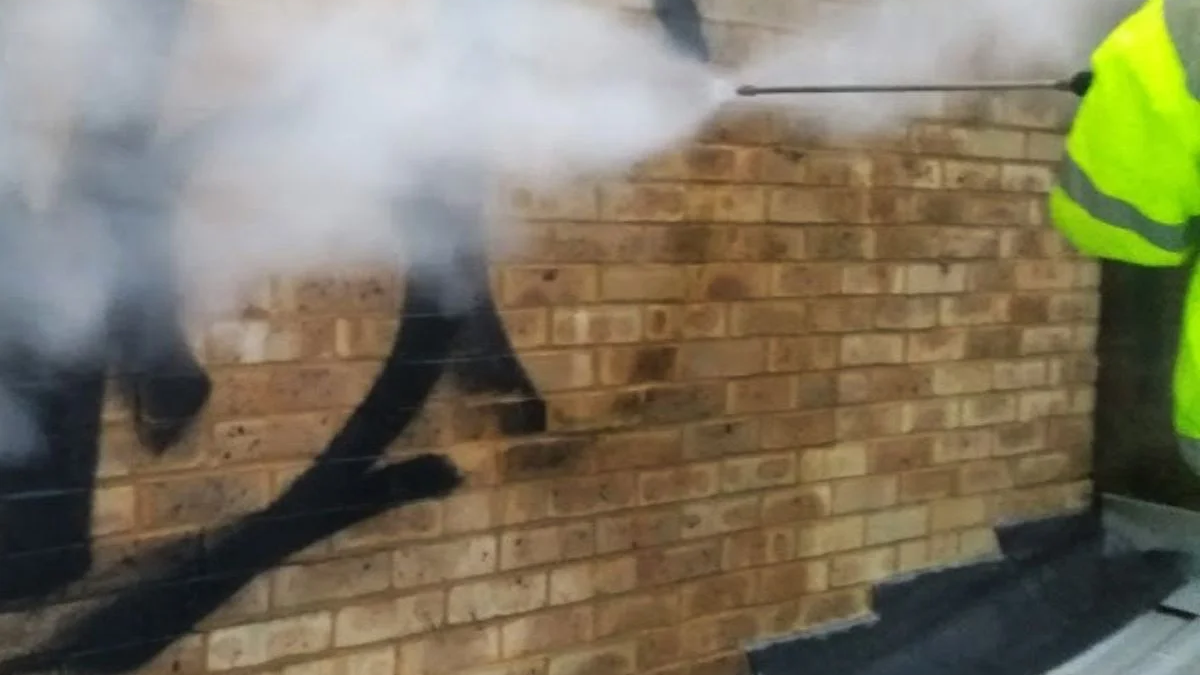Graffiti, often viewed as a form of artistic expression, can simultaneously pose a significant challenge for property owners, particularly in preserving the aesthetic appeal and structural integrity of their buildings.
The presence of unwanted spray paint can be more than a visual annoyance – it can also lead to long-term damage if not addressed properly.
In this blog post, we delve into the most effective methods for graffiti cleaning. Alongside this, we will examine various other techniques, including the use of graffiti removers and anti graffiti coatings. These methods not only remove graffiti but also protect surfaces from future vandalism.
Our goal is to guide you through the graffiti removal process, providing insights into both DIY solutions and professional graffiti removal services, ensuring your property retains its pristine condition.

Understanding the surface
Before diving into the intricate world of graffiti removal, it is crucial to assess the type of surface affected by the unwanted graffiti. Commonly targeted areas include concrete, brick, stone, metal, wood, glass, and plastic.
Each of these materials interacts uniquely with spray paints and permanent marker pens, necessitating bespoke solutions for effective removal. For instance, porous surfaces like brick walls and stone may absorb paint deeper, requiring potent graffiti removal chemicals or a robust graffiti remover. On the other hand, non-porous surfaces such as metal or plastic often respond well to gentler methods.
Recognizing the nature of the surface not only aids in efficiently removing graffiti but also in preventing potential damage during the cleaning process. Employing the right combination of anti graffiti coating, paint stripper, and graffiti prevention techniques is key to preserving the integrity of the surface while ensuring the graffiti is completely eradicated.

Steam cleaning – A Superior approach for gfraffiti removal
In the realm of graffiti removal, steam cleaning, notably DOFF steam cleaning, emerges as a remarkably effective solution. This technique employs high-temperature steam to delicately yet efficiently dissolve and eradicate graffiti.
Its effectiveness extends across various materials, including sensitive metal surfaces and other materials commonly found in private, commercial or public places.
Unlike methods that rely on harsh chemicals like methylene chloride or high-pressure brushes, steam cleaning ensures the graffiti is removed without compromising the structural integrity of the surface, be it a wall or any hard surface of a building.
Additionally, this method plays a pivotal role in cleaning graffiti and helping to prevent graffiti, thereby contributing to the mitigation of criminal damage.

Alternative methods for graffiti removal
For graffiti removal, various other types of methods can be employed:
Chemical removal
In the UK and other areas, chemical solutions are frequently used, particularly on metal and plastic surfaces. These require careful handling due to environmental and health risks. It’s advised to perform a patch test and utilise appropriate equipment when applying chemicals.
Pressure washing
Less invasive yet sometimes less effective, pressure washing is often paired with chemical cleaners to remove graffiti. Selecting the proper pressure level is crucial to avoid surface damage.
Sand blasting
Ideal for masonry and brick, sand blasting effectively tackles deep-set paint. However, it demands precision to prevent chipping, particularly on historical structures.
Painting over
This method offers a swift solution, especially for surfaces already painted. However, it might result in a patchwork look and necessitate more maintenance.
Dry and wet ice blasting
Both environmentally friendly, with wet ice blasting being a more cost-effective variant, these methods work well on a range of surfaces, including brick and concrete, removing graffiti without the harsh impacts of chemicals.

Removing graffiti from various surfaces
When tackling graffiti removal, the approach largely depends on the surface in question:
- Concrete and brick: For these surfaces, methods such as pressure washing, sand blasting, or ice blasting are effective in removing graffiti. Additionally, chemical graffiti removal products prove useful, especially for older graffiti that’s more challenging to remove.
- Wood: For sealed wood, chemical paint removers are the go-to option. In contrast, unsealed wood may require power washing or sand blasting, with a preliminary patch test recommended to ensure no damage to the surface.
- Glass: To remove graffiti from glass, professional chemical removers are the safest bet. These might sometimes need supplementary gentle scraping with a brush to fully eliminate the graffiti.
- Stone: On stone surfaces, options vary based on the severity of the graffiti. Pressure washing, various blasting techniques, or mild chemical cleaners are all effective solutions, each balancing graffiti cleaning efficacy with environmental considerations.
In all cases, it’s essential to consider the type of paint used by vandals and the specific characteristics of the surface to ensure efficient and safe graffiti removal.


